London Design Biennale is a global stage for world-leading contemporary design and design-led innovation, creativity and research. This year’s edition is curated by the Nieuwe Instituut and its artistic director, Aric Chen. With the theme of The Global Game: Remapping Collaboration, the event aims to rethink how nations communicate and collaborate. Over 40 exhibitors from around the world will showcase world-leading design, confronting global challenges and inspiring audiences with thought-provoking and interactive installations. Here are the key installations not to miss.

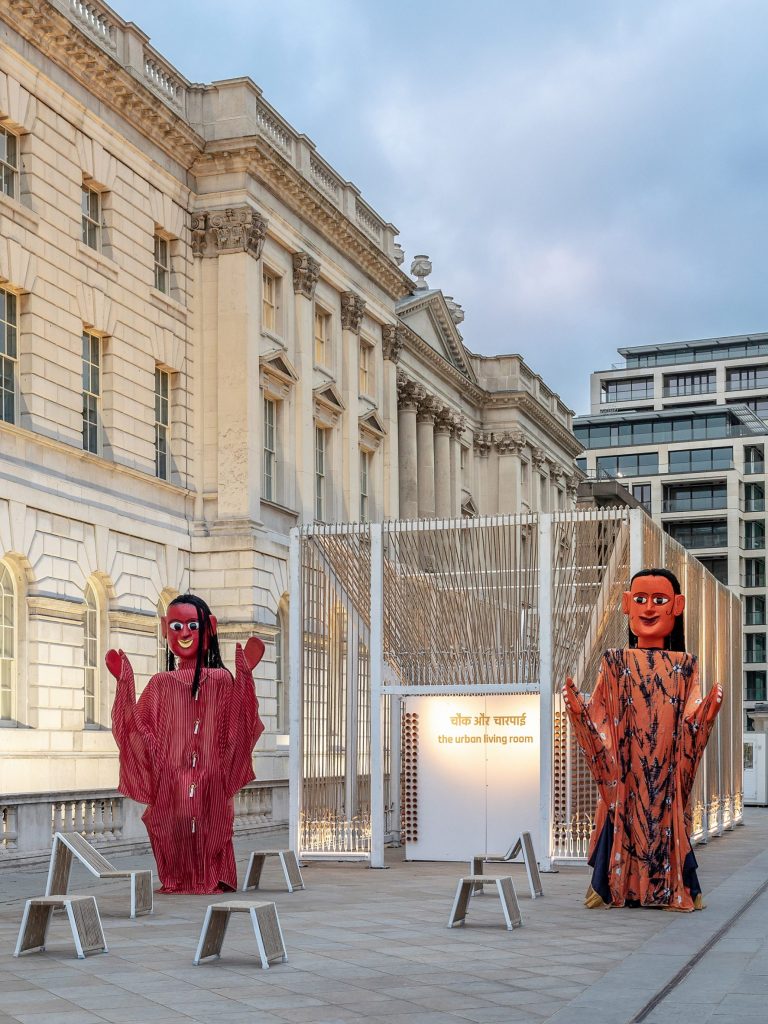
Chowk & Charpai: An Urban Living Room, India, by Archohm
Set on the riverside terrace, the Indian pavilion developed by design studio Archohm is a multi-sensory evocation of the essence of a contemporary Indian city chowk – an open market at the junction of streets – through the visual metaphor of a charpai – a traditional woven daybed found across India. The charpai is a vernacular Indian design typology that transcends time, and its weave is representative of Indian craft. Its versatility expresses “Indianness” with its plurality of use. In essence, the charpai is a micro chowk in itself – a place for conversations and collaborations.
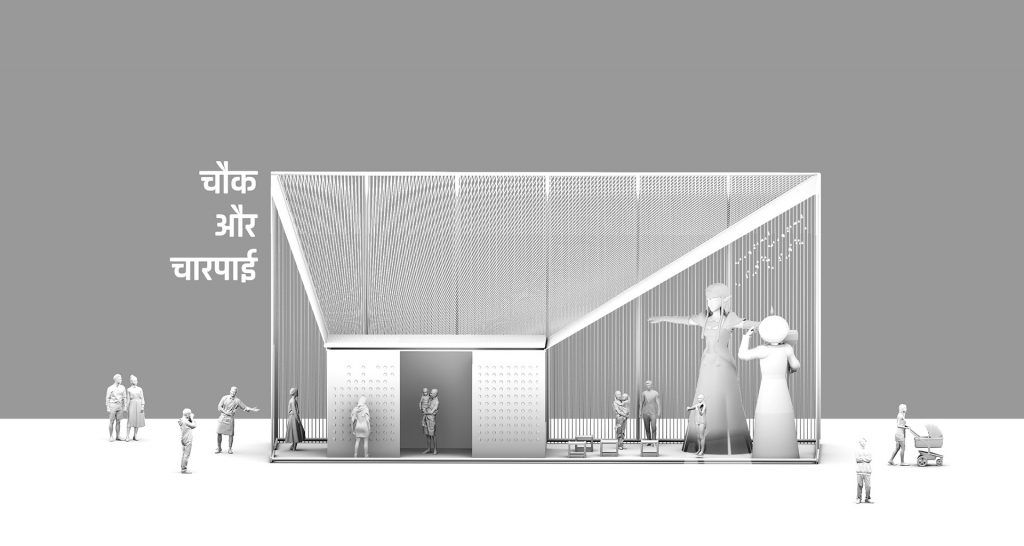
Chowk & Charpai: An Urban Living Room, India, by Archohm
The oversized web of the charpai represents India – modern in its outlook, rooted in its culture. Formed from woven ropes set over an angular frame, the pavilion stands as a large urban charpai sculpture, its weave rendering a play of light and shade to make a street square – a chowk, where chance encounters take place. Through the elements of touch, sound, sight, smell and taste, the chowk will represent Indian urbanity, which adjusts and adapts through dense landscapes.
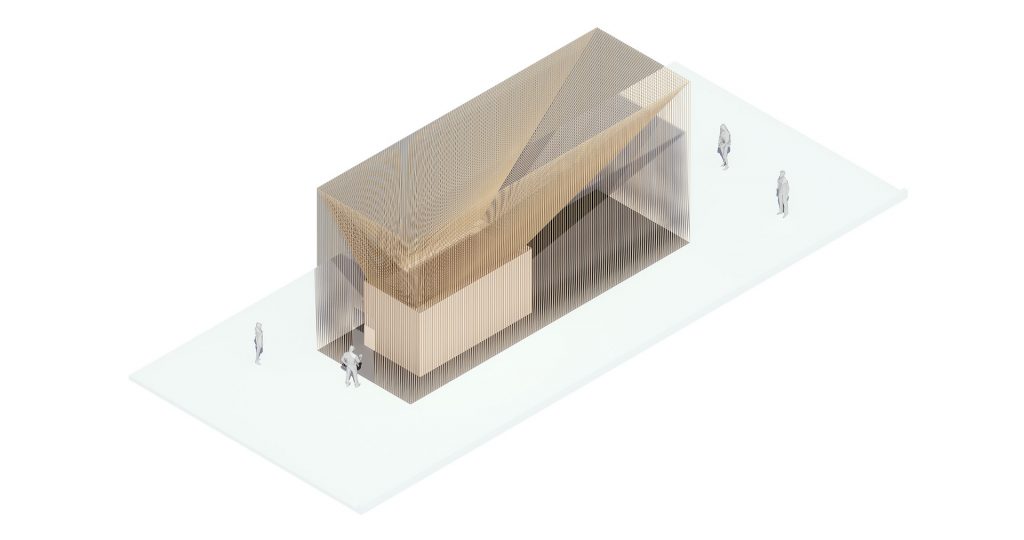

Chowk & Charpai: An Urban Living Room, India, by Archohm
At its centre, the pavilion is decorated in hundreds of kullad clay cups used for drinking chai. Those are left intentionally unglazed and fixed to the structure with magnets, so they can ultimately be returned to the earth.
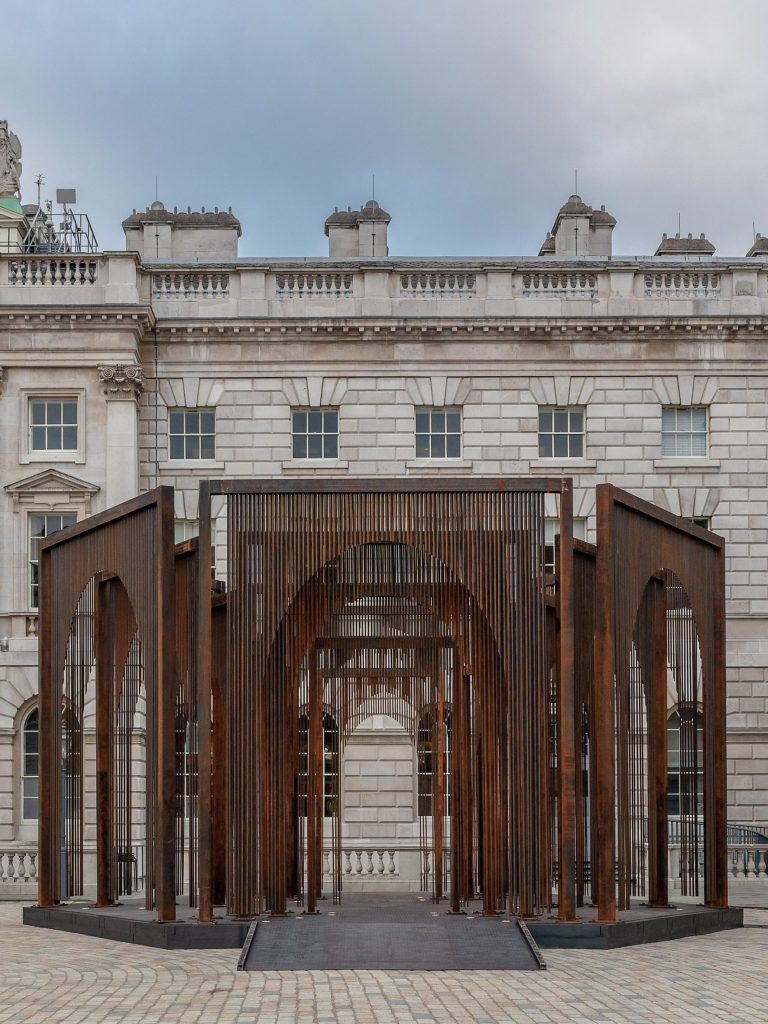
Openwork, Turkey, by Melek Zeynep Bulut (also header image)
Conceived by architect Melek Zeynep Bulut, the Turkish pavilion acts like a giant hexagonal wind chime that forms a series of steel gates. Named Openwork, it comprises a performative space and a theatrical exhibition on the concept of gates and their role in enforcing borders and social hierarchies.
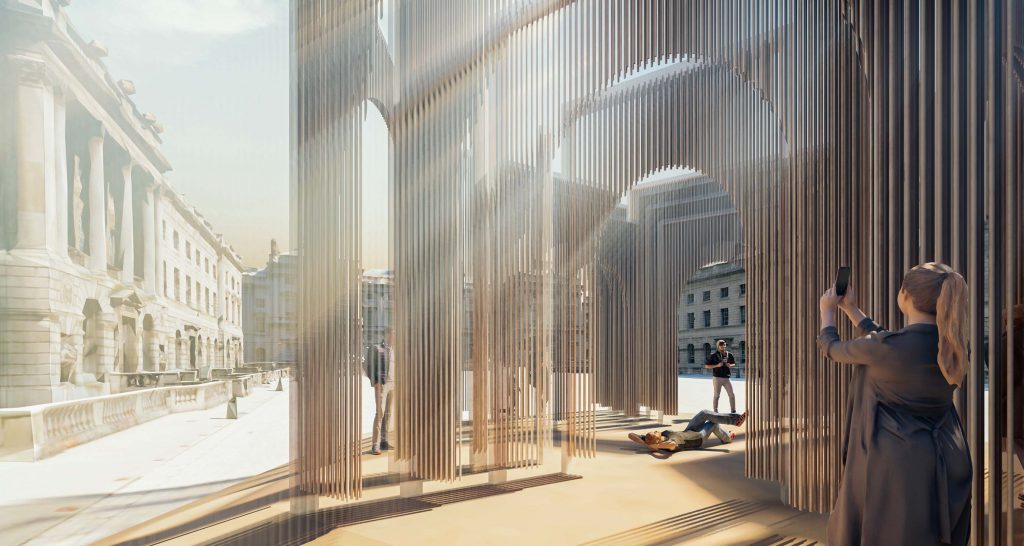
Openwork, Turkey, by Melek Zeynep Bulut
In Openwork, visitors have control of a gated exhibition. Themes of displacement and exchange are explored via abstract and metaphorical ‘gates’ and ‘liminality’ that are created by the resonating audible surfaces. Steel rods dangle from the three progressively smaller arches that make up each gateway, musically jingling in the breeze. Just like an instrument, they turn the installation into a game of ‘exchange’ with the touch of the visitor.
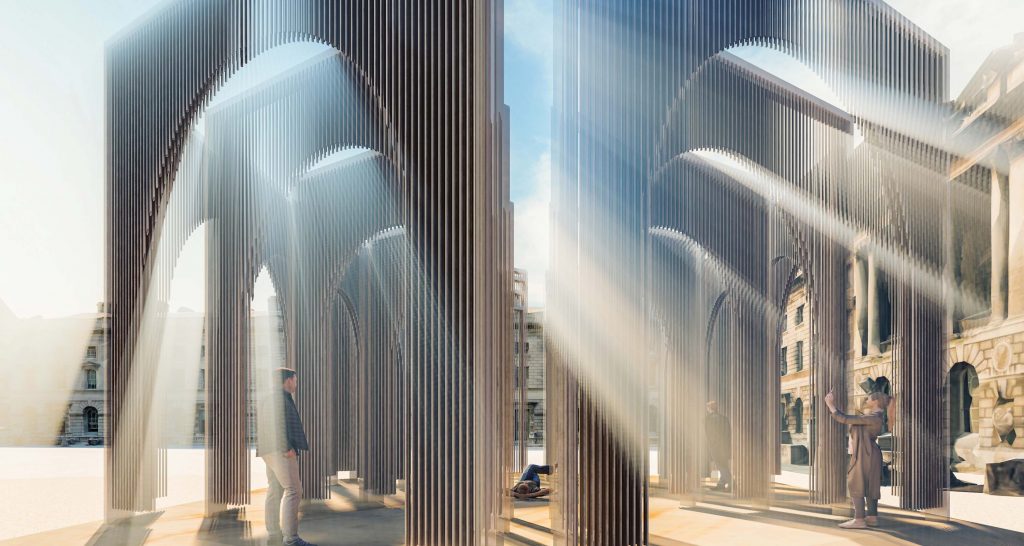
Openwork, Turkey, by Melek Zeynep Bulut
The installation intends to blur the lines between visitor, installation, ground, time, power and boundaries. These represent changing power dynamics and deconstruction of rigid structures in society. Through this experimental game, visitors can experience an unpredictable union and a new reality.
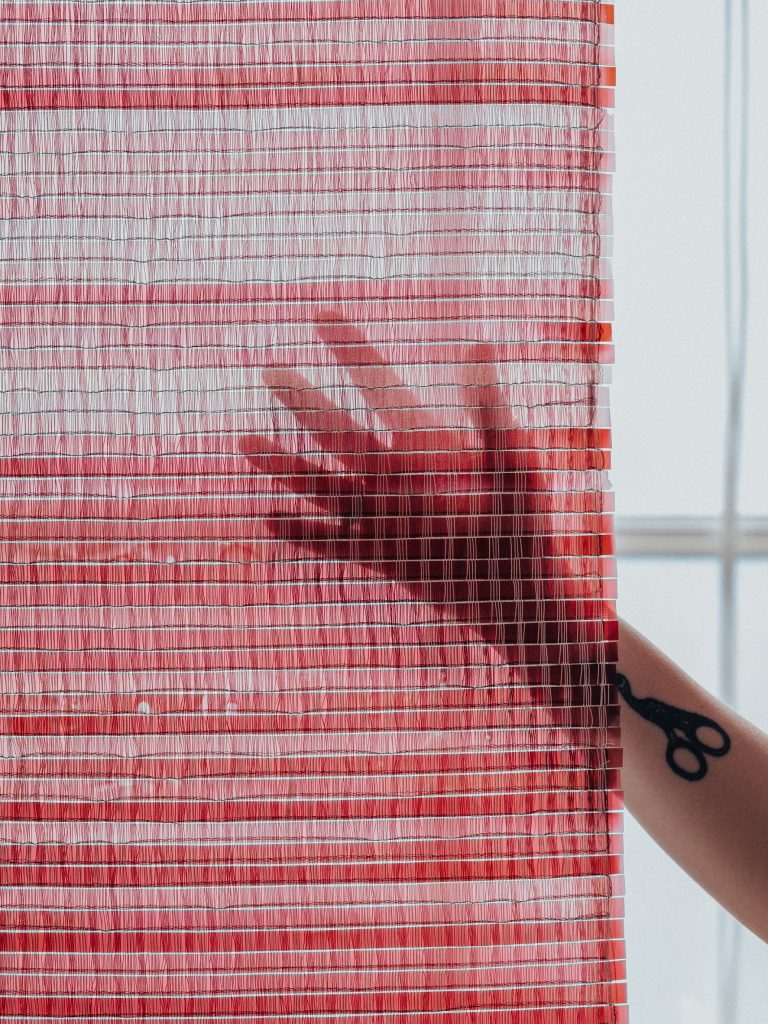
Materia Prestada, Chile, by Sofía Guridi
The aim of the installation in the Chilean pavilion is to explore the value and possible future uses of the world’s most abundant biopolymer, cellulose – a renewable, biocompatible, and biodegradable material, commonly used to produce paper and textile fibres, of which Chile is the tenth exporting country worldwide. Conceived by designer Sofía Guridi and named Materia Prestada, the installation comprises sheets of bio-textiles made from tree cellulose and natural dyes, which suspended from the ceiling.

Materia Prestada, Chile, by Sofía Guridi
The largest of the sheets is dipped in water and will slowly degrade over the course of the exhibition revealing hidden layers of information for visitors to discover, while others act as touch sensors, interwoven with conductive metal yarn and hooked up to speakers that emit different sounds as the textiles are stroked and prodded.
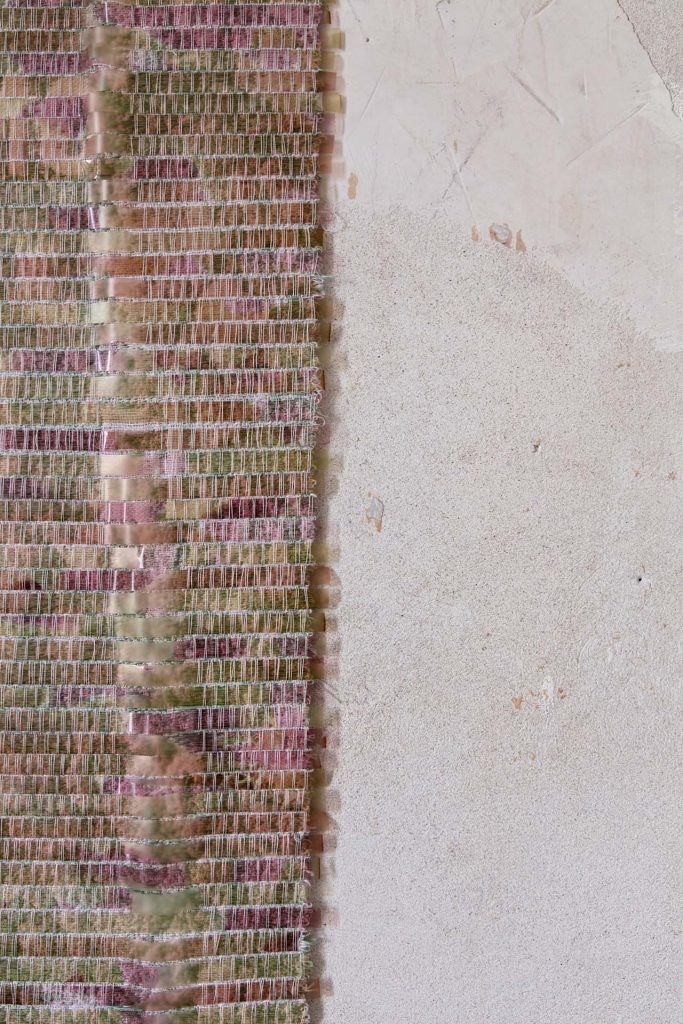
Materia Prestada, Chile, by Sofía Guridi
This fabric is a reflection of the production, distribution and collaboration chains in three geographical locations: Finland, where research on biomaterials and textiles is carried out by designer Sofía Guridi; Chile, the origin of the cellulose to be used; and London, the place of the exhibition and degradation of the pieces.
Using a weaving technique as a means of visual communication, the pavilion explores the identity of Chile as a territory. It also reflects on global issues, with a critical look at extraction and production processes, promoting collaboration between actors and a decentralisation of resources.